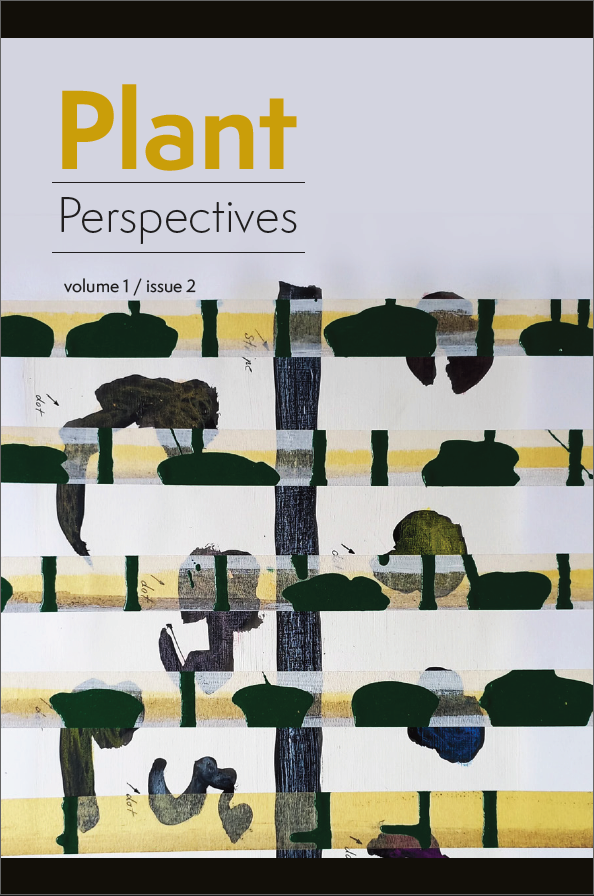Published 2024-10-17
Keywords
- Resonance,
- Biodiversity,
- Conservation,
- Ecology
How to Cite
Copyright (c) 2024 Claudia Keller

This work is licensed under a Creative Commons Attribution 4.0 International License.
Abstract
Charlotte McConaghy’s novel Once There Were Wolves tells the story of the reintroduction of wolves in the Scottish Highlands, thereby bringing the concept of rewilding – an innovative form of biodiversity conservation – into fiction. This novel shows how, within the paradigm of biodiversity, ‘plant perspectives’ and the search for a language of resonance must be considered in the broader ecological context, alongside the wolves. The article analyses how the novel highlights the importance of resonance through the protagonist Inti Flynn’s special relationship with plants, while also critically reflecting on this concept by depicting a resonance catastrophe – arising from Inti’s overly symbiotic relationship with her sister and the wolves. The conservation effort only succeeds, and the trees begin to grow over the bare hills, when Inti and the initially opposed local sheep farmers come together. Thus, this article argues, the novel demonstrates that contemporary conservation issues require a critical discussion of both the lack and excess of resonance in our relations to nature, fostering a mutual transformation of both ecologists and the local population in their relationships with each other and with nature.
References
- Adorno, Theodor W. 1970. Minima Moralia. Reflexionen aus dem beschädigten Leben. Frankfurt a. M.: Suhrkamp.
- Artmann, Martina. 2023. ‘Human-Nature resonance in times of social-ecological crisis – a relational account for sustainability transformation’. Ecosystems and People 19 (1): 2168760. https://doi.org/10.1080/26395916.2023.2168760
- Beschta, Robert L. and William J. Ripple. 2016. ‘Riparian vegetation recovery in Yellowstone: The first two decades after wolf reintroduction’. Biological Conservation 198: 93–103. https://doi.org/10.1016/j.biocon.2016.03.031
- Breithaupt, Fritz. 2017. Die dunklen Seiten der Empathie. Berlin: Suhrkamp.
- Fredericks, Anthony D. 2023. In Search of the Old Ones: An Odyssey among Ancient Trees. Washington DC: Smithsonian Books.
- Gilbert, Scott F., Jan Sapp and Alfred I. Tauber. 2012. ‘A symbiotic view of life: We have never been individuals’. The Quarterly Review of Biology 87 (4): 325–41. https://doi.org/10.1086/668166
- Heise, K. Ursula. 2016. Imagining Extinction: The Cultural Meanings of Endangered Species. Chicago: The University of Chicago Press.
- Karst, Justine, Melanie D. Jones and Jason D. Hoeksema. 2023. ‘Positive citation bias and overinterpreted results lead to misinformation on common mycorrhizal networks in forests’. Nature Ecology & Evolution 7: 501–11. https://doi.org/10.1038/s41559-023-01986-1
- Lowenhaupt-Tsing, Anna. Friction. An Ethnography of Global Connection. Princeton: Princeton University Press.
- Luhmann, Nilas. 1988. Ökologische Kommunikation. Kann die moderne Gesellschaft sich auf die ökologischen Gefährdungen einstellen? Opladen: Westdeutscher Verlag.
- McConaghy, Charlotte. 2021. Once There Were Wolves. New York: Flatiron Books.
- Monbiot, George. 2013. Feral. Searching for Enchantment on the Frontiers of Rewilding. London: Penguin Press.
- Morton, Timothy. 2016. Dark Ecology. For a Logic of Future Coexistence. New York: Columbia University Press.
- Norton, Bryan G. 2007. ‘Biodiversity: Its meaning and value’. In Sahotra Sarkar and Anya Plutynski (eds). A Companion to the Philosophy of Biology, pp. 368–89. Malden MA: Blackwell.
- Pelluchon, Corine. 2018. Ethique de la considération. Paris: Éditions du Seuil.
- Rosa, Hartmut. 2016. Resonanz. Eine Soziologie der Weltbeziehung. Berlin: Suhrkamp.
- Simard, Suzanne W., David A. Perry, Melanie D. Jones, David D. Myrold, Daniel M. Durall and Randy Molina. 1997. ‘Net transfer of carbon between ectomycorrhizal tree species in the field’. Nature 388: 579–82. https://doi.org/10.1038/41557
- Simard, Suzane W. 2021. Finding the Mother Tree. Uncovering the Wisdom and Intelligence of the Forest. London: Penguin Random House.
- Takacs, David. 1996. The Idea of Biodiversity. Philosophies of Paradise. Baltimore: John Hopkins University Press.
- Wilson, Edward O. 1984. Biophilia. Cambridge: Cambridge University Press.
- Wilson, Edward, O. 2016. The Creation. An Appeal to Save Life on Earth. New York/London: W.W. Norton & Company.
- Wohlleben, Peter. 2015. Das geheime Leben der Bäume. Was sie fühlen, wie sie kommunizieren – die Entdeckung einer verborgenen Welt. München, Ludwig Verlag.
- Wohlleben, Peter. 2016. The Hidden Life of Trees. What They Feel. How They Communicate. Discoveries from a Secret World. Vancouver/Berkeley: Greystone Books.

